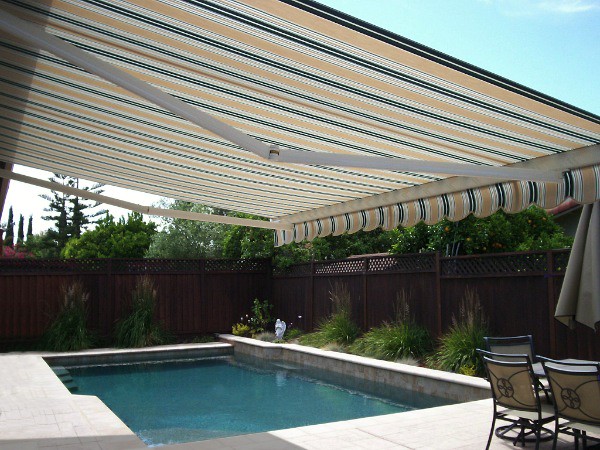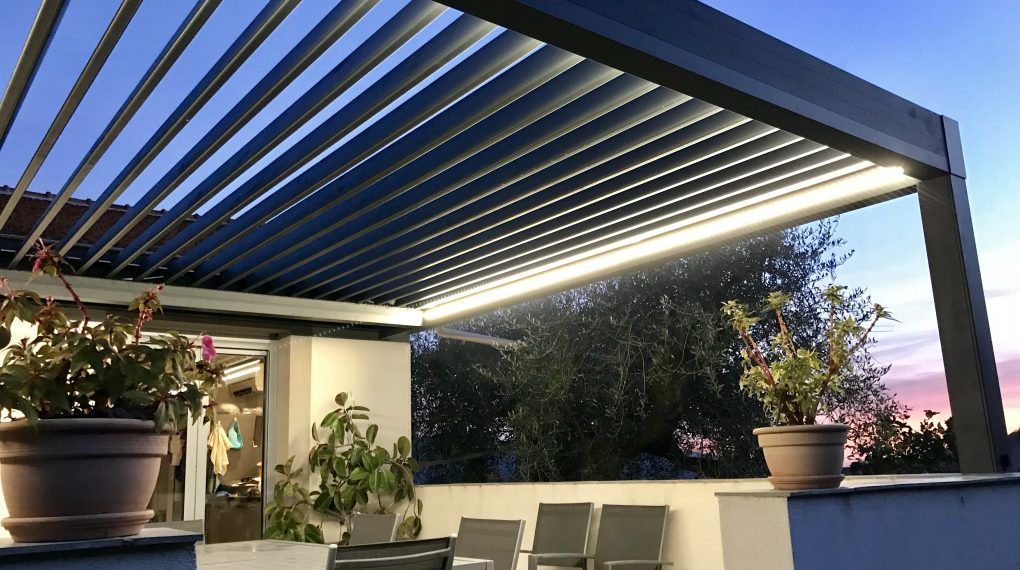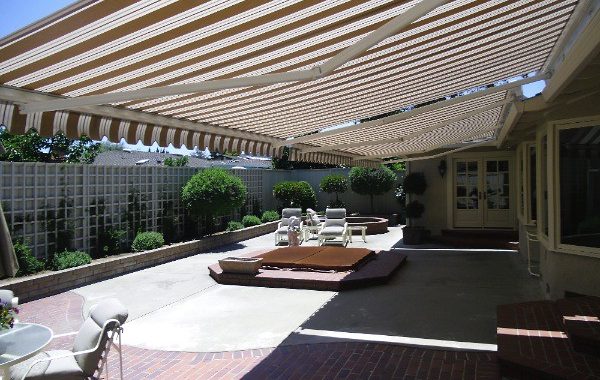Contents
– Pergola awning: removable for all-weather
– Choosing a pergola awning: dimensions, fabric and mechanism
– Installation of a pergola awning: no compulsory step
A pergola can be leaned against a wall or self-supporting but also removable. This is the case with the folding arbour, the awning for the caravan or the pergola blind.
Pergola awning: removable for all-weather

A pergola awning or banner awning is a fabric that unfolds over a terrace. It protects from the sun and prying eyes. The pergola awning has the advantage of being able to be folded in case of bad weather.
Suppliers offer two types of pergola awnings:
– the wall-mounted awning: hung on a façade, the most common.
– the self-supporting awning: on a stand, straight, leaning, two panels in a triangle or corrugated.
Are you looking for an awning supplier in Melbourne? Blinds and Awnings Company Pty Ltd is the name to remember here!
Choosing a pergola awning: dimensions, fabric and mechanism
It is essential to consider several criteria to choose a pergola awning:
– the dimensions of the fabric,
– the type of fabric,
– the type of frame,
– the type of mechanism.
Dimensions of the pergola awning: calculate the desired shade
The more the pergola awning extends over the terrace, the greater the shadow cast on the ground: a top that extends 2.50 meters will provide one meter of shadow.
Manufacturers offer pergola awnings of different lengths:
– 2 m 50: standard for small terrace, offers only one meter of shade,
– 3 m: standard for a small terrace,
– 3.5m: standard for a medium-sized terrace, offering approximately 2.5m of shade,
– 4 to 5 m: larger dimensions for a large terrace.
Attention: The pergola awning is inclined towards the ground. The further it extends over the terrace, the lower its height becomes. Please, make sure that there are at least two meters of height at the end of the awning.
The choice of the fabric

The choice of the fabric of the pergola awning is crucial. It must meet several constraints:
– to be solid, not to tear easily and to resist bad weather,
– be waterproof, resistant to UV rays, light and water,
– be treated beforehand against insects and mildew,
– resist tearing and the weight of the leaves,
– be easy to maintain.
Finally, the fabric must be under warranty. The material exists in many colours and prints: plain, striped …
Pergola awning: the different types of canvas
Here are the different types of canvas for a pergola awning:
– polypropylene: this light and economical fabric protects a terrace but has a short lifespan,
– 100% light acrylic: standard fabric that is waterproof and UV resistant, it protects the terrace for occasional use,
– 100% reinforced acrylic: standard fabric treated to provide increased resistance and facilitate cleaning,
– 100% coated acrylic: top-of-the-line fabric that is waterproof, resistant and treated for comfort in winter and summer.
3 types of frame for the pergola awning
The frame is placed under the roof and holds the fabric in an unfolded or folded position.
An awning can be spread or folded in two different ways:
– manually: using a crank that operates a winch,
– electrically: via remote control or a switch.
Manufacturers offer three types of frames, also known as boxes:
– integral box: fully enclosed box, the fabric and its arms are completely protected from the weather. It is useless if it is placed under a roof overhang, which already protects the awning.
– semi-closed or cassette box: a box that protects and isolates the fabric (but not its arms) from bad weather.
– monobloc box: a simple frame that does not offer protection for the fabric and its arms.
Good to know: To protect a canvas and its frame, it is also possible to use a protective tarp.
Valuable options for this type of awning
Manufacturers add useful options to their pergola awnings:
– wind sensor: allows, if the wind blows too hard, to automatically fold the awning,
– lambrequin: a small strip of decorative fabric that also provides additional protection against UV.
Installing a pergola awning: no need to do anything
A pergola awning has several significant advantages:
– its price: less expensive than a wall-mounted pergola,
– its ease of installation does not require any particular authorization: you can install the pergola awning directly on a wall or under a roof or ceiling overhang.


Pingback: Tips on Choosing Your Folding Arbour | Home services blog
Pingback: How Wide Should My Awning Be | Golocal business